As per the status of 2019, the world's total population is more than 767.35 crores. It is estimated that it has crossed 780 crores as of March 2020. Only 10% of the world's land area is used by 90% of its population. Here are the top 10 populated countries of the world given which contribute about 60% of the world's population in total. These countries are as follows:
1. China:
China or the People's Republic of China is located in East Asia. The capital of the nation is Beijing whereas its biggest city is Shanghai. China shares its border with 14 countries, the second-most of any country. There are 5 geographical time zones in the country. The total area of the country is 9,596,961 km² which makes it the world's 3rd or 4th largest country by area. China is also the most populous country in the world. It is composed of 23 provinces, 5 autonomous regions, 4 direct-controlled municipalities, and 3 special administrative regions. The currency of China is Renminbi (CNY).
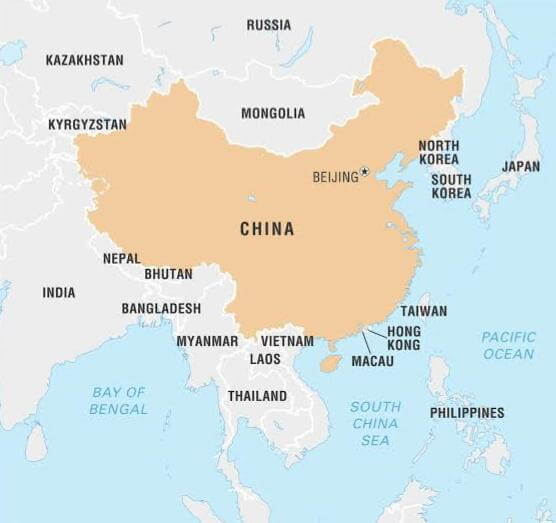
- Population: As per the 2020 census, the total population of China is 1,411,778,724 with a population density of 145/km². From 2009 to 2018, the country suffered from an unemployment rate of 4%. To control the high population growth, China implemented the two-child policy in 1970 and then one-child policy in 1979. Later, in 2016, the policy was again converted into a two-child policy. As of the 2010 census, the total fertility rate in China was 1.4 children per woman. In the same year, the sex ratio at birth in China accounted for 118.06 boys for every 100 girls.
- Languages: In China, about 292 different languages are spoken. Standard Chinese is the official language of the country. The most common language is Mandarin which is spoken by 70% population of China. Some other variants of the Chinese language are Yue, Wu, Min, Xiang, Gan, and Hakka.
- Religion: The largest religion in China is Chinese folk religion which is followed by more than 73.56% of the country's total population. It is followed by Buddhism (15.87%), Taoism & Folk Sects (7.6%), Protestantism (2.19%), Islam (0.45%), and Catholicism (0.34%). The country has banned more than a dozen religions by giving them a title of "evil cults".
- Education: As per the data of 2018, China's total literacy rate is 84%. The state-run public education system is primarily responsible for controlling the education framework of the nation. China has the world's 2nd largest population of international students. The country also has the world's 2nd largest higher education system.
2. India:
India or the Republic of India is a South Asian The capital of the country is New Delhi while its largest city is Mumbai (and Delhi also after including its metropolitan area). The total area of India is 3,287,263 km² which makes it the 7th largest country in the world by area. The country shares its land border with Pakistan, China, Nepal, Bhutan, Myanmar, and Bangladesh. Its border also touches the Indian Ocean, the Arabian Sea, and the Bay of Bengal. India also has the vicinity of the Maldives and Sri Lanka. The country is the world's 2nd largest country by population and also the largest democracy in the world. India is composed of 28 States and 8 Union Territories. The currency of the country is Indian Rupee (INR).
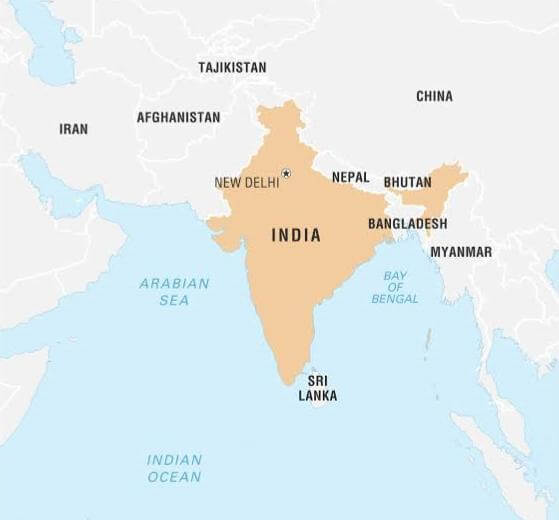
- Population: As per the estimated data of 2018, India has a total population of 1,352,642,280 with a total population density of 412.3/km². As per the census of 2011, the country had a human sex ratio of 940 females per 1,000 males. As of 2020, the median age of India was7 years. The average life expectancy in the nation is 68. In 2011, the country has a literacy rate of 74.04%. In the same year, the urbanization rate in India was 31.16%.
- Languages: The official dialect of India is Hindi in the Devnagari script and is used by most of the individuals (26.6% of the whole populace) as a means of communication. Other than this, English is the subsidiary official language of the country. The country has not any National language and it is the home of around 415 living languages. There are 22 regional languages in India as scheduled languages. Some other widely spoken languages of the country are Bengali, Marathi, Telugu, Tamil, Gujarati, Urdu, Kannada, Odia, Malayalam, Punjabi, and Assamese.
- Religion: India is a secular country with the majority of Hinduism which covers 79.8% of its total population. Most of them are from Shaivite and Vaishnavite Other than this, 14.23% of people belong to Islam which is the second-largest community in the country, the third-largest Muslim population in the world, and the largest for a Non-Muslim majority country. Other than this, 2.3% belongs to Christianity, 1.72% to Sikhism, 0.7% to Buddhism, 0.36% to Jainism, and 0.9% to others.
- Education: As per the 2011 census, the total literacy rate in India is 73% while as per the 2017-18 reports of the National Statistical Commission, the literacy rate in the country was 7% which is higher among urban areas than rural areas. The country has also a higher male literacy rate compared to the female literacy rate. India has also the 3rd largest higher education system in the world.
3. United States:
The United States of America (USA) or the US or just America is located in North America. The capital of the USA is Washington, D.C. whereas its biggest city is New York City. The nation has a shared border with Canada and Mexico. The total area of the country is 9,833,520 km² which makes it 3rd or 4th largest country in the world by area. America is also the world's 3rd largest country by population. The currency of the USA is the United States Dollar (USD).
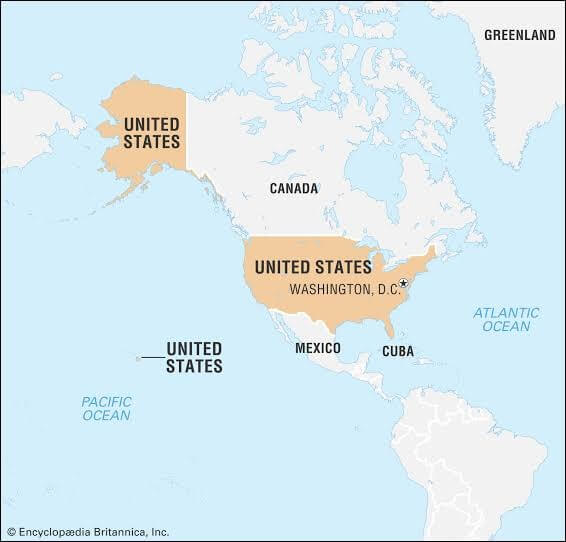
- Population: As per the census of 2020, the USA has a total population of 331,449,281 and a total population density of 33.6/km². In 2018, America had over 90 million immigrants which state for 28% of the country's population. In 2020, the median age of the country's population was 5 years. Almost 82% of the total population belongs to urban zones. The country's total fertility rate is 1.64 children per woman.
- Languages: The de facto national language of the country is English specifically, American English. But the USA has not any official language in the federation. However, in most states, English is declared as the official language which is used by the majority of the population as a means of communication. Spanish is the second most followed language of the USA. Some other languages include Chinese, Tagalog, Vietnamese, French, Korean, and German. In the USA, about 18% of people use both English and another language for the communication purposes.
- Religion: The USA has the largest Christian population in the world. It is also the majority religion of the country. Most of them are Protestant (42%). Some other religions include Catholic (21%), Mormon (2%), Agnostic (6%), Jewish (2%), Muslim (1%), Hindu (1%), and Buddhist (1%). Other than this, about 26% population of the country include those who belong to the category of unaffiliated, atheist, other religion, and unanswered.
- Education: The country's literacy rate is 99%. The amount spent by the government on every student is the highest in the US. This is the reason why 80% of college students in the country go to public universities. America's higher education system is the largest in the world.
4. Indonesia:
Indonesia or the Republic of Indonesia is located in Southeast Asia and Oceania between the Pacific Ocean and the Indian Ocean. The capital and the biggest city of the country is Jakarta. The total area of the country is 1,904,569 km² which makes it the world's 14th largest country by area and also the largest Island country on the globe. Indonesia is formed with a group of over seventeen thousand islands. Indonesia is the 4th most populous country in the world and also the most populous Muslim-majority country. The currency of Indonesia is the Indonesian Rupiah (IDR).
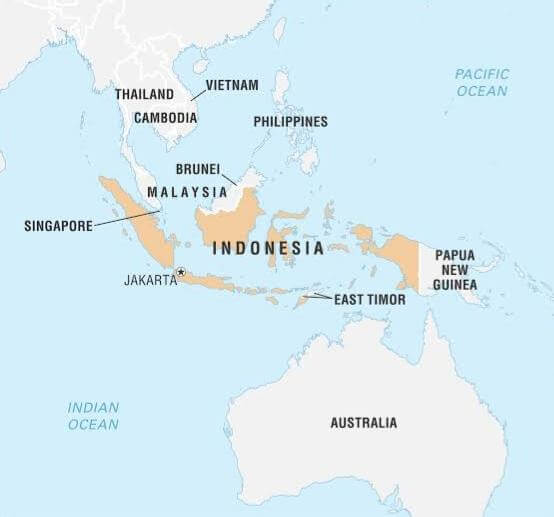
- Population: As per the 2020 census, the total population of Indonesia is 270,203,917 with a total population density of 141/km². The country has a moderate population growth rate of 1.3%. Java, an island of Indonesia is the foremost crowded island of the world which contains 56% of the nation's total populace. Indonesia has a young population with a median age of 30.2 years.
- Languages: The official, as well as the national language of Indonesia is Indonesian. Other than this, there are over 700 regional languages in the country. Indonesian is the most widely spoken language due to its widespread use in education, business, politics, mass media, and other activities. Most of the people also speak at least one of the regional languages. There are more than 1,300 ethnic groups lives in Indonesia.
- Religion: Indonesia has a majority of the Muslim Almost 90% population of the country follows Islam which makes Indonesia, the largest Muslim populated country in the world. Other than this, 7.6% are Protestantism & other Christian, 3.12% are Catholicism, 1.74% belongs Hinduism, 0.8% are Buddhism, 0.03% follows Confucianism while 0.4% belongs other religion.
- Education: As per the reports of 2018, Indonesia has a literacy rate of 95.66% which is higher among males in comparison to females. As per the estimations, in 2020, the country's literacy rate has reached 99.8%. Indonesia's education system is the 4th largest in the world.
5. Pakistan:
Pakistan or the Islamic Republic of Pakistan is a South Asian The capital of Pakistan is Islamabad whereas its largest city is Karachi. The total area of the country is 881,913 km² which makes it the 33rd largest country in the world by area. Pakistan shares its border with India, China, Afghanistan, Iran, the Arabian Sea, and the Gulf of Oman. Pakistan is being separated from Tajikistan by the Wakhan Corridor of Afghanistan. The country stands at the 5th number among the countries with the highest population. The currency of the country is the Pakistani Rupee (PKR).
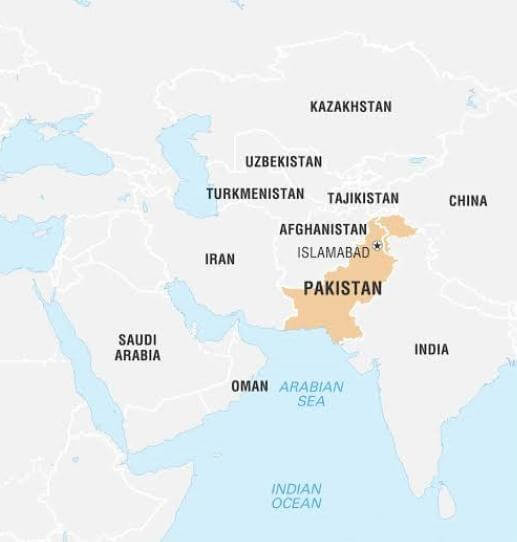
- Population: As per the estimated census of 2021, the total population of Pakistan is 225,199,937 with a total population density of 244.4/km². In 2016, the fertility rate in the country was68, higher than India. Pakistan is termed as a "Young Nation" with a median age of 23.4. The country has an annual growth rate of 1.45% (highest among the SAARC nations). It is estimated that the country's population will reach 263 million by 2030 and Pakistan will become the world's largest Muslim majority country by surpassing Indonesia.
- Languages: The official and national language of the country is Urdu while English is the subsidiary official language (its local variety is known as Pakistani English). But Urdu is preferred by only 7% population as the primary language. The majority of the population, i.e., 38.78%, speaks Punjabi as a primary language. There are more than 60 languages used in Pakistan for communication purposes. Some other widely spoken languages include Pashto, Sindhi, Saraiki, Balochi, Hindko, Pothwari, Brahui, Kashmiri, Gujarati, Marwari, and Pahari.
- Religion: Pakistan has a majority of Muslim community which stands for 96.47% of its total population. Most of them are Sunni. Other than this, 2.14% follow Hinduism (with a majority of Sindhis), 1.27% belong to Christianity while 0.11% people include both others and non-religious. These other religions are Sikhism, Buddhism, Jainism, and Parsi. Kalash has its unique identity and religion in the country.
- Education: As per the reports of 2017, the total adult literacy rate in Pakistan is only 13% which is much higher among males (71.12%) compare to females (46.47%). The literacy rate of Pakistan is one of the lowest among South Asian countries. The country spends only 2% of its total GDP on education.
6. Brazil:
Brazil or the Federal Republic of Brazil is located in both South America and Latin America. The capital of the country is Brasília whereas its largest city is São Paulo. The total area of Brazil is 8,515,767 km² which makes it the 5th largest country in the world by area. The country shares its border with 9 countries and the French Department of Guiana. Brazil is at the 6th position among the countries with the highest population. The country is composed of 26 States and the Federal District. Brazil has witnessed mass immigration from around the world which contributed to making it, one of the most multicultural countries in the world. The currency of Brazil is Brazilian Real (BRL).
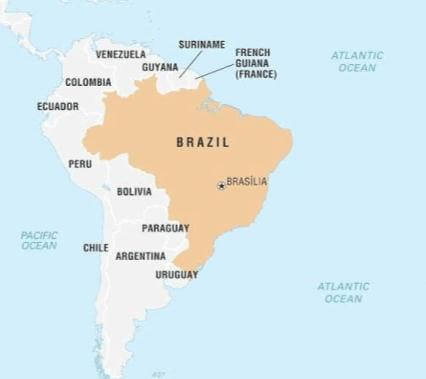
- Population: As per the estimated data of 2019, the total population of Brazil is 210,147,125 with a population density of 25/km². About 84.35% population lives in urban areas. In 2007, the life expectancy rate of the country was 6 years.
- Languages: The only official and national language of Brazil is Portuguese which is spoken by almost whole population. This variety of Portuguese is known as Brazilian Portuguese. In 2002, the country legally recognized sign language also and makes it an important part of education, especially for deaf people. This Brazilian Sign Language is in known as LIBRAS. Other than this, Spanish and English are also used by some people. However, various minority languages are spoken throughout the nation.
- Religion: The predominant religion of Brazil is Roman Catholicism with 64.63% population. The country also contains the world's largest Catholic population. Protestantism is the second most followed religion with 22.2% population. Other than this, 0.2% belongs to Kardecist Spiritism, 3.2% belongs to other religions, and 8% are not from any religion.
- Education: As per the data of 2018, Brazil has a total literacy rate of 93.23% which is higher among males in comparison to females. The education system of the country leads to its high literacy rate. This system makes it mandatory for children between the age group of 6-14 to attend school. In Sao Paulo, more than 500 universities are established.
7. Nigeria:
Nigeria or the Federal Republic of Nigeria is located in West Africa between the Sahel and the Gulf of Guinea. The capital of the country is Abuja whereas its biggest city is Lagos. The total area of the country is 923,769 km² and it is the 32nd largest country in the world by area. Nigeria shares its border with Niger, Chad, Cameroon, and Benin. It is at the 7th position among the countries with the highest population. The country comprises 36 states and the Federal Capital Territory. The currency of Nigeria is Nigerian Naira (NGN).
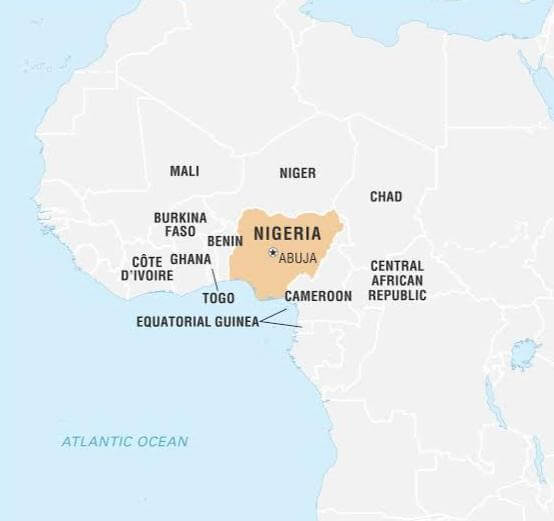
- Population: The estimated population of Nigeria as per the data of 2018 is 195,874,685. The population density in the country is 167.5/km². The birth rate in Nigeria is 2 births/1,000 populations and the death rate is 9.6 deaths/1,000 populations. The country has a total fertility rate of 5.07. Nigeria is the foremost crowded nation of Africa and holds its 17% population.
- Languages: The official language of Nigeria is English. There are 521 languages in the country that were spoken, but at present only 512 are alive. The national languages of the country are Hausa, Igbo, and Yoruba. Some other major spoken languages include Ijaw, Fulfulde, Ogoni, Edo, Kanuri, Boze, Berom, Bura, Ukwuani, Kupa, Tiv, Tyap, Fyer, etc.
- Religion: Nigeria is a religiously diverse country with 55.9% Muslims and 43.6% Christianity. Only 0.6% population belongs to traditional African and other religions. The Muslim population of the country is the largest in Sub-Saharan Africa. Most of the Muslim communities are Sunni while most of the Christian communities are Protestant.
- Education: Nigeria has a very low literacy rate and only its 68% population can read and write. This rate is higher among males in comparison to females. The country has a policy of free and compulsory primary education. Nigeria has the world's largest out-of-school learning youths population.
8. Bangladesh:
Bangladesh or the People's Republic of Bangladesh is located in South Asia. The capital and the biggest city of Bangladesh is Dhaka. The total area of the country is 148,560 km² which makes it the 92nd largest country in the world by area. The country shares its border with India, Myanmar, and the Bay of Bengal. Siliguri Corridor separates Bangladesh from Nepal and Bhutan and Sikkim, state of India separates it from China. Bangladesh is at the 8th position among the most populated countries. It is also the most densely populated country on the globe. This is due to the existence of a large number of people over a small piece of land. The currency of Bangladesh Bangladeshi Taka (BDT).
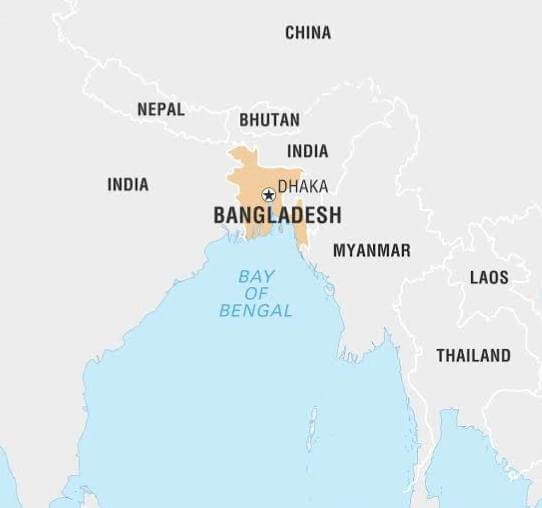
- Population: As per the data of 2017, the estimated population of Bangladesh is 161,376,708. The nation stands at the 7th position in the list of the most densely-populated large country. The country's total fertility rate is 05 which is lower in comparison to India and Pakistan. In 2016, the life expectancy rate of Bangladesh was 72.49 years.
- Languages: The official, as well as the national language of Bangladesh, is Bengali or Bangla spoken by about 98% of the population. Bengali is used in the promulgation of laws, acts, and ordinances of the country but the verdicts passed by the Supreme Court are in English. Other than this, Urdu is also an important language of the country and is mainly spoken in Old Dhaka by the Bihari community.
- Religion: Bangladesh is a Muslim nation with 90.4% of the total population belongs to Islam. Most of them are Sunni which is followed by Shia and Ahmadiya. Hinduism is the second-largest religion in the country which is followed by 8.5% of the population. Most of them are Bengali Hindus. Bangladesh is also the world's third-largest Hindu community. Other than this, Buddhism accounts for 0.6%, Christianity for 0.4% and 0.1% belongs to other religions.
- Education: As per the reports of 2019, Bangladesh has a literary rate of 74.7% which is higher among males while lower among females. With the modernization of education policy, literacy has improved in the country.
9. Russia:
Russia or Russian Federation is located in Eastern Europe and Northern Asia. The capital and the biggest city in Russia is Moscow. The total area of Russia is 17,098,246 km² which makes it the world's largest country by area. Due to its vast area, Russia has the most borders of any country on the planet with 16 sovereign nations. Other than this, the country also extends across 11 time zones. Russia is at the 9th position among the countries with the highest population. It is also Europe's most populated country. The currency of Russia is the Russian Ruble (RUB).
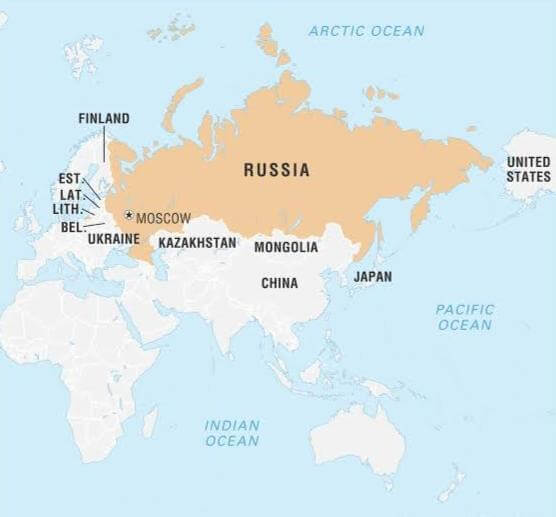
- Population: As per the census of 2021, the country has a total population of 146,171,015 which makes Russia, one of the most sparsely populated and urbanized countries. The country's population density is only 8.4/km². The large area of the country is the prime cause of its low population density.
- Languages: The official and national language of Russia is Russian. It is the most widely spoken Slavic language in the world. Other than Russian, there are more than 100 minority languages spoken in Russia. Tatar and Ukrainian are respectively the 2nd and 3rd most widely used languages of Russia.
- Religion: Russia is a secular state with Christianity as the largest religion. About 40-80% of the country's total population attach to the Russian Orthodox Church which makes Russia the largest Orthodox populated country in the world. About 10% of the population belongs to Islam which makes it the country's second-largest religion. Other than this, 15% of people are unaffiliated while 1% belongs to other religions.
- Education: Russian government provided a free education system. In 2018, the country's literacy rate was 99.73%. Around 54% of the country's population are higher graduates which are the highest in the world.
10. Mexico:
Mexico or the United Mexican States is located in the southern portion of North America. The capital of the nation is Mexico City which is also the largest metropolitan area of Mexico. The country shares its border with the US, Pacific Ocean, Guatemala, Belize, Caribbean Sea, and the Gulf of Mexico. The total area of Mexico is 1,972,550 km² and it is the 13th largest country in the world by area. Mexico is the 10th most populous country on the globe. The country is a federation with 31 States. The currency of Mexico is the Mexican Peso (MXN).
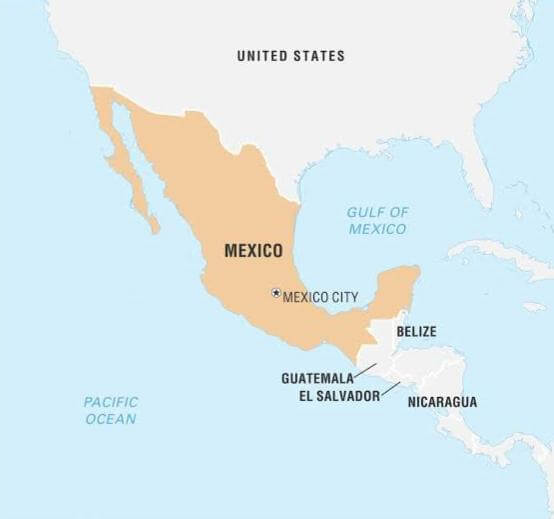
- Population: As per the census of 2020, Mexico has a total population of 126,014,024. The total population density of the country is 61/km².
- Languages: The de facto national language of Mexico is Spanish and is spoken by most of the people in the country. The sound, structure, and vocabulary of the language vary from region to region which is known as Mexican Spanish. There are 68 national languages including 63 indigenous languages and there 364 verities are officially recognized by the federal government. Some of them are Nahuati, Yucatec Maya, Tzeltal, Tzotzil, Mixtec, Zapotec, etc. Other than these indigenous languages, several minority languages are also spoken in the country. They include Chipilo, English, French, and others.
- Religion: As per the 2020 census by the National Institute of Statistics and Geography, it is found that Roman Catholicism is the major religion of Mexico followed by 77.7% people of the country. Other than this, 11.2% are Protestantism, 2.4% belongs to other religion, and 8.1% have no religion while 0.4% did not share their religious information. The Mexican Catholics make the second-largest Catholic community around the globe.
- Education: In 2004, Mexico got the 24th rank in the UNESCO'S list of literacy rates. In 1980, the country's literacy rate was 82.99% which had reached 86% in 2018.